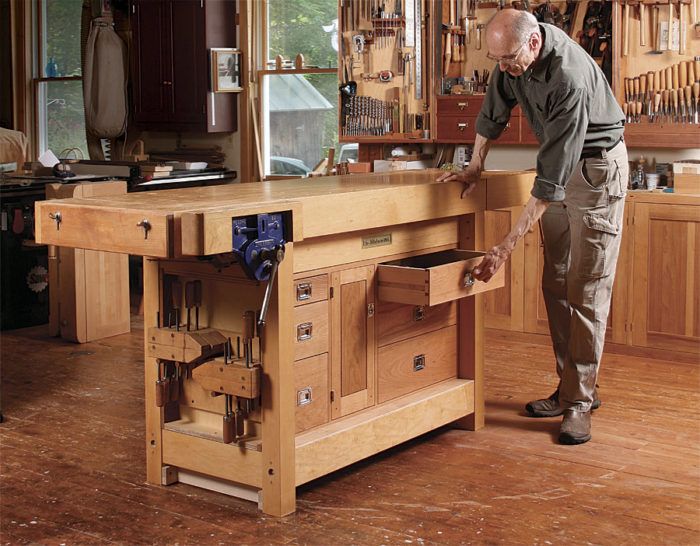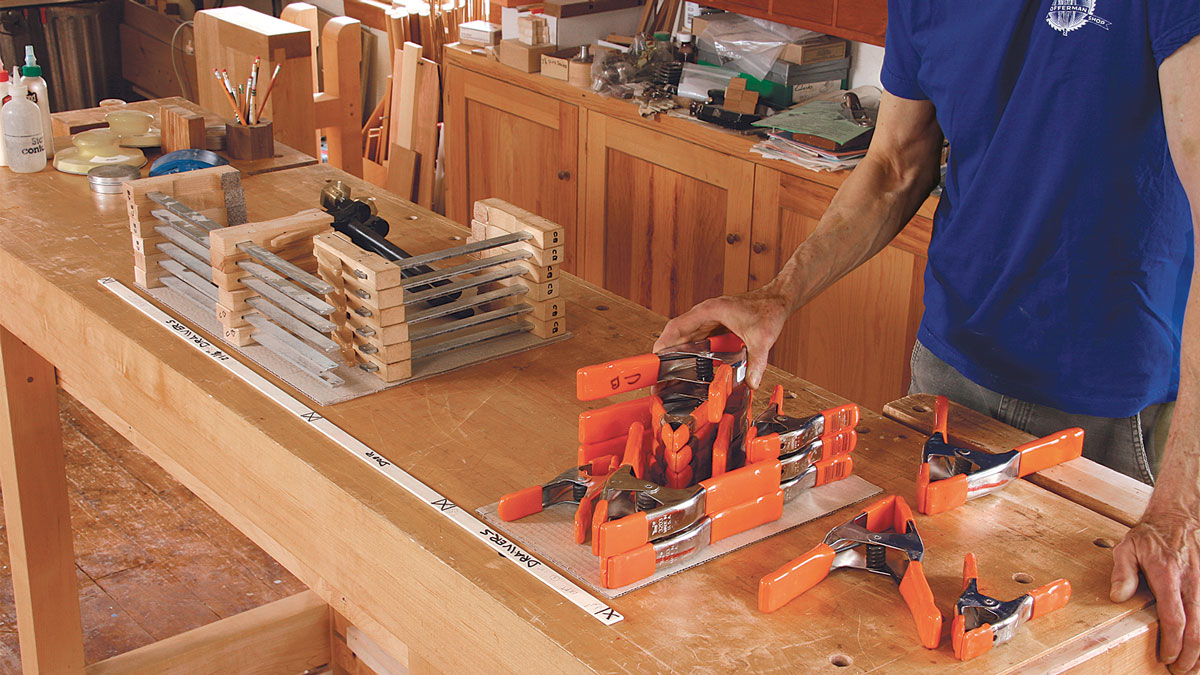Under-Bench Tool Cabinet
Practical storage cabinet utilizes the wasted space beneath your benchtop.

Synopsis: All it takes is proper planning and a little effort to create a custom cabinet to fit your bench, your tools, and your work style, and to fit it into that space under your workbench that often becomes a receptacle for stray stuff. This cabinet has a plywood carcase, simple dado joints, and screws, dressed up with a solid face frame in front and a frame-and-panel back.
The shelf below my workbench was always heaped with stray stuff—clamps, power cords, glue, scraps, jigs—things I often needed at the bench but never quite found a home for. It was constantly a mess, and the space above the mound of stuff was wasted, too. Sound familiar? Wouldn’t a storage cabinet under there be just the ticket?
All it takes is proper planning and a little effort to create a custom cabinet to fit your bench, your tools, and your work style. Just as I did when building my wall-hung tool cabinet (see “Tool-Cabinet Design,” FWW #153), I measured and grouped similar items to fit specific drawers beforehand to achieve an efficient and well-planned layout. Your cabinet will differ in size and layout, of course, depending on your bench and your tools.
Layout tips for tools
Not every bench is the same, so you’ll have to custom-fit this design to suit your situation. To determine the exterior dimensions of your cabinet, measure the distance between the legs of your workbench. My cabinet slides in from the end of the bench, just fitting between the front and rear legs, and leaving a 3-in.- wide clamping ledge along both the front and back of the bench. This also keeps the cabinet from interfering with the benchdogs. If your bench doesn’t have stretchers positioned to support the cabinet, you may have to add ledger strips as I did.

Some time spent planning the arrangement of items in the drawers and cabinet will result in the most efficient layout. I started by grouping similar items that might go into the same drawer. I put all the stuff that accumulates in the tool well—sanding blocks, glue bottles, pencils, tape, spacers, and partially used sandpaper— together in the top shallow drawer. Larger items like clamps, hold-downs, and bench hooks fit in the larger drawers.
When I designed my wall-hung tool cabinet I made scaled graph-paper cutouts of my tools to find the best fit. But here I simply laid things out on the bench to see how they fit together. I cut a scrap to the length of the cabinet, arranged the tools, and marked the door and drawer sizes on the stick.
From Fine Woodworking #258
For the full article, download the PDF below:
Fine Woodworking Recommended Products

Woodriver Rechargeable Desiccant Bag

WoodRiver Router Bit Storage Case








Comments
I like the plan, but what about all the sawdust & plane shavings that fall thru the dog holes? This is a problem on my bench. Maybe add a removable tray that would catch debris?
A double sided drawer/tray would work perfectly for this. Small layout tools and the like can live there and be retrieved from either side of the bench when required, and, of course, clean out whatever debris that has fallen through.
Log in or create an account to post a comment.
Sign up Log in